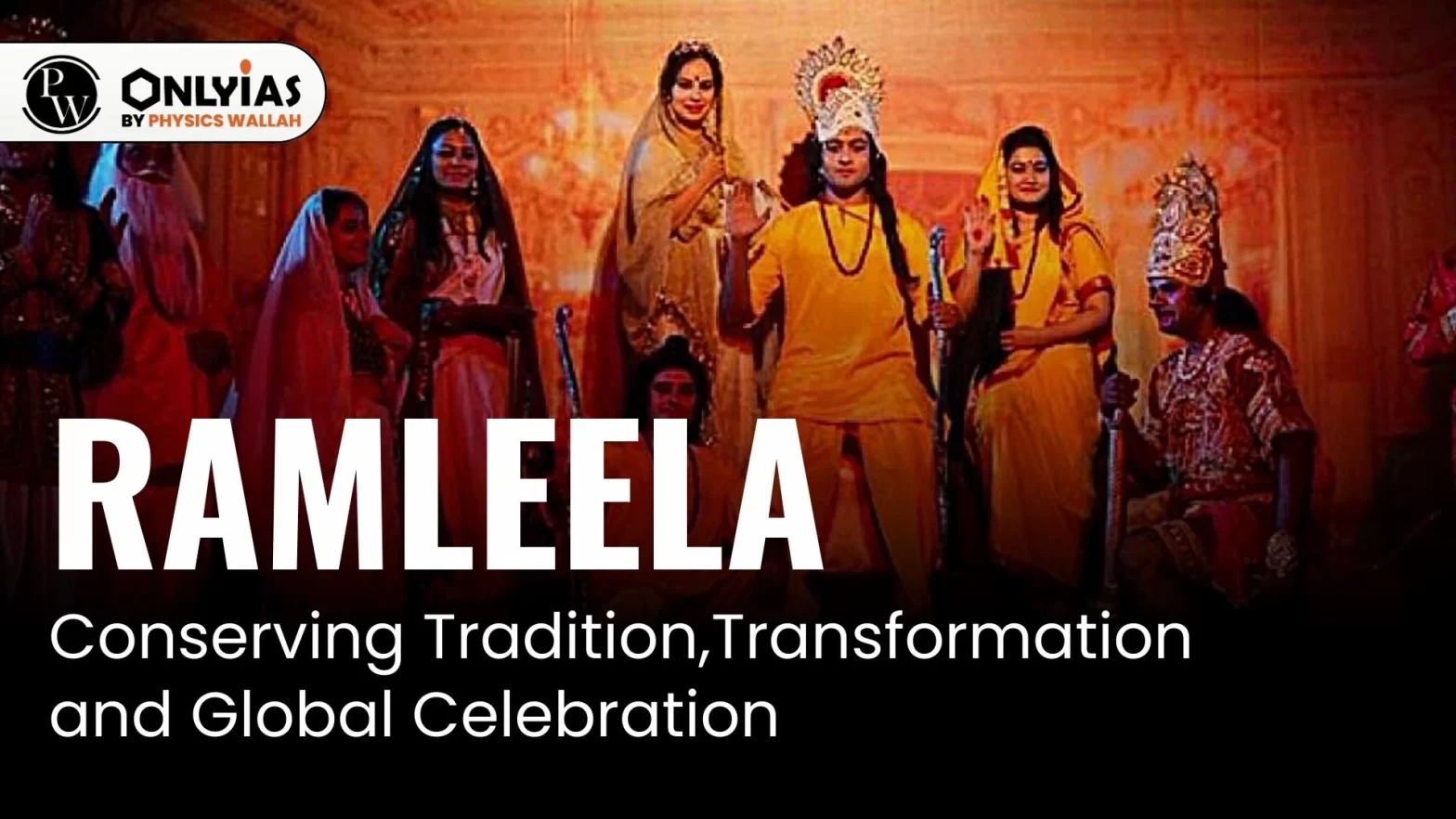Context: The Lav Kush Ramleela at Red Fort in Delhi is set to feature notable actors and politicians in its cast this year.

| Must Read | |
| NCERT Notes For UPSC | UPSC Daily Current Affairs |
| UPSC Blogs | UPSC Daily Editorials |
| Daily Current Affairs Quiz | Daily Main Answer Writing |
| UPSC Mains Previous Year Papers | UPSC Test Series 2024 |
It is a traditional performance based on the Ramayana epic, portraying the life and adventures of Lord Rama. It is performed during the festival of Dussehra every year across northern India.
Key features include narration, traditional music, elaborate costumes, community participation, and regional variations.
It imparts moral education, fosters cultural identity, preserves traditional arts, and promotes unity and harmony.
Its origins are believed to date back to between 1200 and 1500 A.D., with its popularity increasing after Tulsidas wrote the Ramacharitamanas in the accessible Awadhi language.
It is performed with distinct styles in places like Ayodhya, Vrindavan, Almora, Sattna, Madhubani, Ramnagar, and Benares.
Khon Ramlila is a masked form of Ramlila art in Thailand, featuring masked dance and narration of the Ramayana story with no dialogues.
It has adapted by incorporating contemporary themes, using technology like online streaming and VR, and enhancing the show with special effects.

<div class="new-fform">
</div>